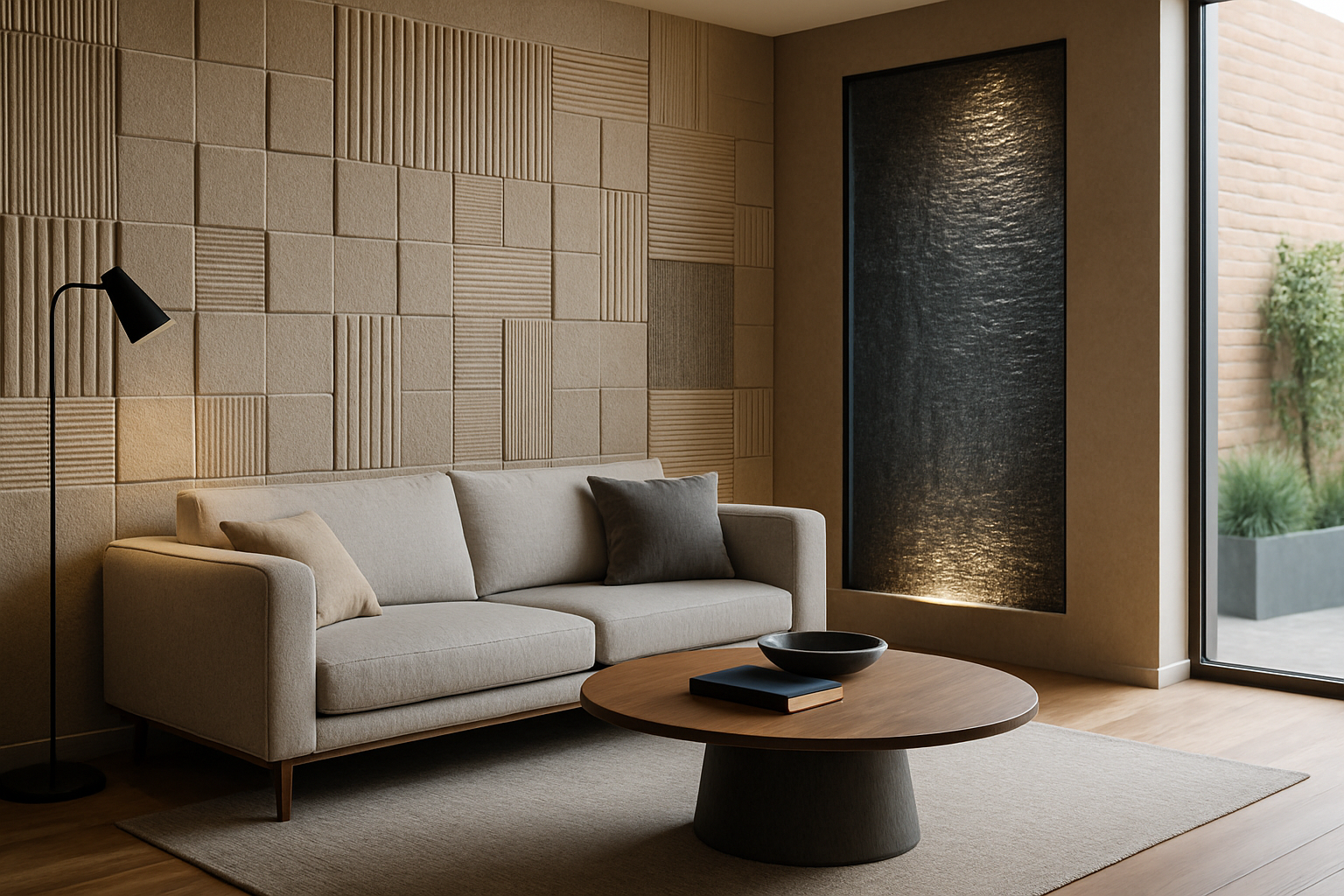Harnessing Soundscapes: The Art of Acoustic Design in Home Interiors
In a world where visual aesthetics often take center stage, a revolutionary approach to home design is quietly gaining momentum. Welcome to the realm of acoustic design, where the invisible art of soundscaping is transforming living spaces into harmonious havens. This innovative concept goes beyond mere noise reduction, focusing instead on curating an auditory experience that enhances mood, productivity, and overall well-being. Join us as we explore how the strategic manipulation of sound is reshaping the way we perceive and interact with our home environments.

At its core, acoustic design addresses three main aspects: sound absorption, sound diffusion, and sound isolation. Sound absorption reduces echo and reverberation, creating a more comfortable listening environment. Sound diffusion spreads sound evenly throughout a space, eliminating dead spots and hot spots. Sound isolation prevents noise from traveling between rooms or from outside sources.
Sonic Palettes: Materials and Textures in Acoustic Design
Just as a painter uses different brushes and pigments, acoustic designers employ a variety of materials and textures to shape the sonic landscape of a home. Soft, porous materials like fabrics, carpets, and acoustic panels absorb sound waves, reducing echo and creating a sense of warmth. Hard, reflective surfaces like glass and concrete, on the other hand, can be used strategically to add liveliness and brightness to a space.
Innovative materials are constantly emerging in the field of acoustic design. For instance, sound-absorbing wallpapers made from recycled materials offer an eco-friendly solution without compromising on style. 3D-printed acoustic diffusers provide both visual interest and superior sound control, allowing homeowners to customize their spaces down to the finest detail.
The Silent Revolution: Integrating Acoustic Design into Modern Homes
As awareness of the impact of sound on our well-being grows, homeowners are increasingly seeking ways to incorporate acoustic design principles into their living spaces. This silent revolution is reshaping how we approach home design, with architects and interior designers now considering the acoustic properties of a space from the very beginning of the planning process.
One emerging trend is the creation of acoustic zones within open-plan living areas. By using a combination of sound-absorbing materials, furniture placement, and strategically positioned acoustic panels, designers can create distinct auditory environments within a single space. This allows for a quiet reading nook to coexist harmoniously with a lively entertainment area, for example.
Beyond Silence: The Positive Power of Curated Sound
While reducing unwanted noise is a crucial aspect of acoustic design, the true art lies in harnessing the positive power of sound. This involves not just eliminating disruptive noises but also introducing beneficial sounds that enhance the ambiance and functionality of a space.
Water features, for instance, are making a comeback in interior design, not just for their visual appeal but for their soothing acoustic properties. The gentle sound of flowing water can mask unpleasant background noises and create a sense of tranquility. Similarly, smart home systems are being integrated with acoustic design principles to deliver personalized soundscapes that adapt to different times of day or activities.
The Future is Listening: Emerging Trends in Home Acoustic Design
As technology continues to advance, the future of acoustic design in homes looks increasingly sophisticated and personalized. One exciting development is the use of active noise control systems, which use sound waves to cancel out unwanted noise in real-time. These systems can be particularly effective in urban environments where external noise pollution is a constant challenge.
Another emerging trend is the integration of psychoacoustics into home design. This involves considering not just the physical properties of sound but also how it is perceived and processed by the human brain. By understanding the psychological impact of different sounds, designers can create spaces that not only sound good but also feel good on a deeper, more intuitive level.
In conclusion, acoustic design is revolutionizing the way we think about and experience our home environments. By paying attention to the invisible yet powerful world of sound, we can create living spaces that not only look beautiful but also sound and feel harmonious. As this field continues to evolve, it promises to bring a new dimension to home design, one that engages all our senses and enhances our quality of life in subtle yet profound ways.





